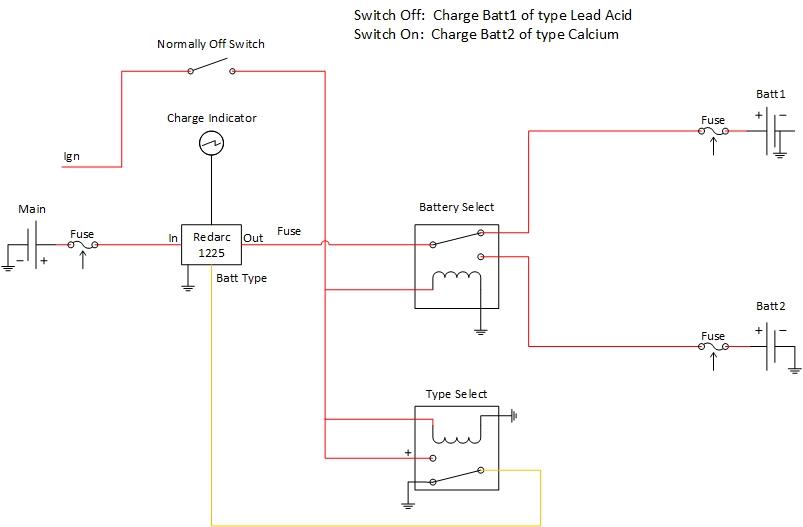By what you wrote about your setup requirements you would only require one redarc 1225. The setup described in these threads has been to use a switch to allow charging of two different auxiliary batteries by one redarc to avoid purchasing a second redarc as they are expensive. Purchasing two is the best option requiring no output switches and they can be installed close to the battery to allow for temperature compensation. As the temperature rises the charge voltage is compensated so if the single redarc is installed under the bonnet it might undercharge a second battery that is installed in a cooler place, or overcharge in the reverse scenario. But that is the compromise when buying one unit. Note redarc advises you may be able to switch the battery type to compensate depending on the install location and the particular battery chemistry.
For auto switching the input between the alternator and solar panels you require something like the redarc RK1260 kit but this looks like just a relay that switches to solar when the ignition is turned off.
If you went with one redarc to charge two batteries then you require a switch of some sort to switch the redarc output to either battery. Those solenoids most likely don't have the correct pole position, a switch/relay rated at continuous 30-40A will do the job. The reason why I would use a relay over a switch is twofold, one it reduces the heavy wiring requirement in your cab but secondly you can also automatically switch between battery types if you use different second and third battery chemistries. There is a wire from the redarc specifically to do this job and the relay can select whether to make the wire voltage float, go ground or high. The switch would activate both relays simultaneously selecting which battery to charge and its chemistry.
The type of relay depends on the purpose, availability and price. The SPDT will provide a normally closed and open output which is ideal for switching the positive wire and probably the cheapest option. You could use a second SPDT for auto switching the battery chemistry. Ideally you would use a DPDT for this purpose but I found it difficult to find these and they were expensive and not much difference in size to two SPDT.
I hope this helps mate.
Jon
EDIT: Removed fumble fingers




